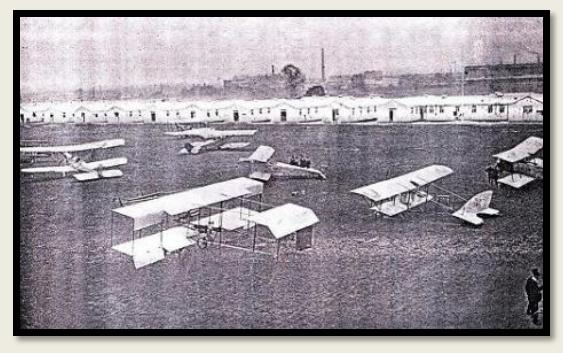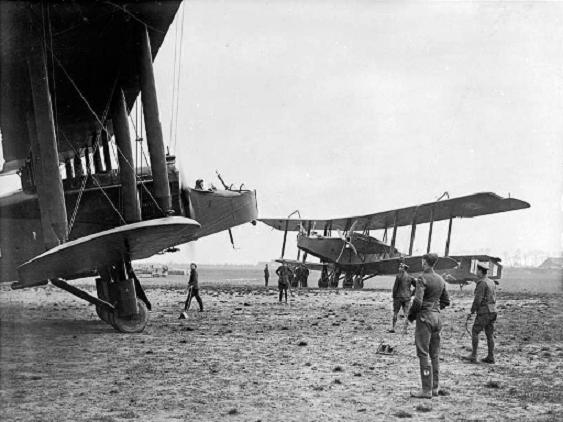William John Baker was born in Winkleigh on 3rd July 1899. His father was John Down Baker, a carpenter and also born in Winkleigh who had married Selina Francis, a local woman, just over a year before. As was usual, William being the first born son followed his father and also became a carpenter. By the time of the 1911 census, William had three brothers and a sister, the family lived at No. 5 Park Place in Winkleigh.
William was too young to join the forces when the war started. He joined the Royal Naval Air Service on 31 January 1918 as Aircraftsman II, when he would have been 18 years old. It is not known whether he was conscripted or joined under the arrangement that if suitable, he could continue to use his profession in the forces. As more aircraft than ever before, carpenters were in demand to maintain and repair aircraft, especially as the Royal Air Force was soon to be established. At this time he was reported to be 5 ft 5¼ in. tall with brown hair, blue eyes and a fresh complexion. It was not until the 1st April 1918 that William started his service at Chingford in Essex at which time he was transferred to the Royal Air Force which came into being on that day.
RAF Chingford was the perfect place for William to start his assessment and training to maintain and repair aircraft.

The aerodrome was in use for training. By all accounts there were many accidents; the Navy even had a boat on a nearby reservoir to rescue aircraft and pilots who may crash there. Today, Chingford Airfield is beneath a nearby lake that is now the William Girling reservoir. William was at Chingford for only a week before he was transferred to his next unit and just months later to 215 Squadron which he joined on 10th June 1918. About this time the Squadron was being supplied with the Handley Page O/400 bomber which was replacing the O/100. The new bomber was significantly larger and more powerful than any that had gone before. It was so successful that the name Handley Page was often used instead of the word bomber.
About this time the Squadron was being supplied with the Handley Page O/400 bomber which was replacing the O/100. The new bomber was significantly larger and more powerful than any that had gone before. It was so successful that the name Handley Page was often used instead of the word bomber.
Two days after his arrival with 215 Squadron, William was attached to 36th Wing ARS (Aeroplane Repair Station) which was at Dover in 1918. After two months William moved again, this time to 5 ARD (Aircraft Repair Depot) at Leeds until he was demobbed at Fovant on 1st May 1919 when he was also reclassified as Aircraftsman I.
1st June 2014


